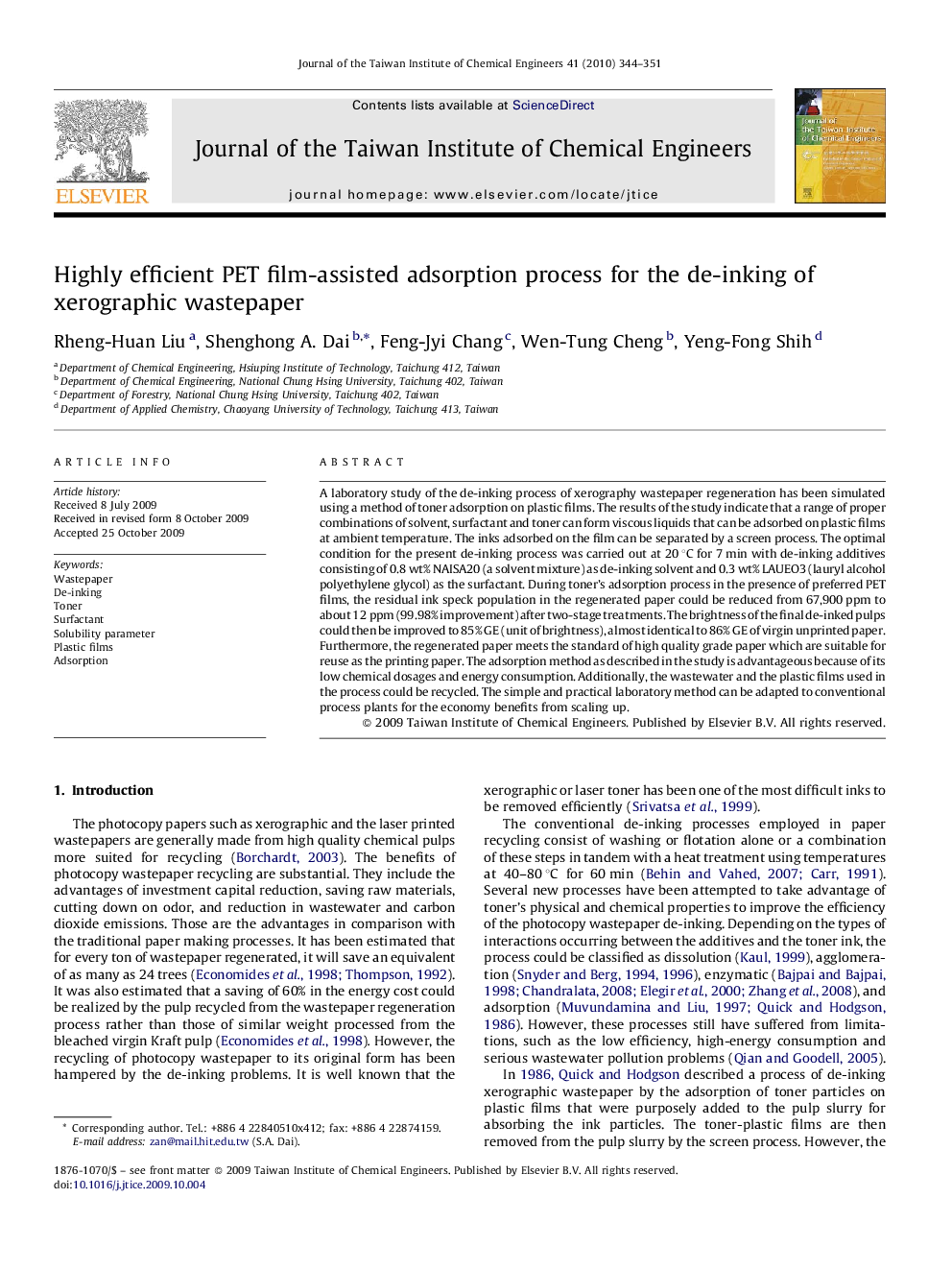| Article ID | Journal | Published Year | Pages | File Type |
|---|---|---|---|---|
| 691925 | Journal of the Taiwan Institute of Chemical Engineers | 2010 | 8 Pages |
A laboratory study of the de-inking process of xerography wastepaper regeneration has been simulated using a method of toner adsorption on plastic films. The results of the study indicate that a range of proper combinations of solvent, surfactant and toner can form viscous liquids that can be adsorbed on plastic films at ambient temperature. The inks adsorbed on the film can be separated by a screen process. The optimal condition for the present de-inking process was carried out at 20 °C for 7 min with de-inking additives consisting of 0.8 wt% NAISA20 (a solvent mixture) as de-inking solvent and 0.3 wt% LAUEO3 (lauryl alcohol polyethylene glycol) as the surfactant. During toner's adsorption process in the presence of preferred PET films, the residual ink speck population in the regenerated paper could be reduced from 67,900 ppm to about 12 ppm (99.98% improvement) after two-stage treatments. The brightness of the final de-inked pulps could then be improved to 85% GE (unit of brightness), almost identical to 86% GE of virgin unprinted paper. Furthermore, the regenerated paper meets the standard of high quality grade paper which are suitable for reuse as the printing paper. The adsorption method as described in the study is advantageous because of its low chemical dosages and energy consumption. Additionally, the wastewater and the plastic films used in the process could be recycled. The simple and practical laboratory method can be adapted to conventional process plants for the economy benefits from scaling up.
